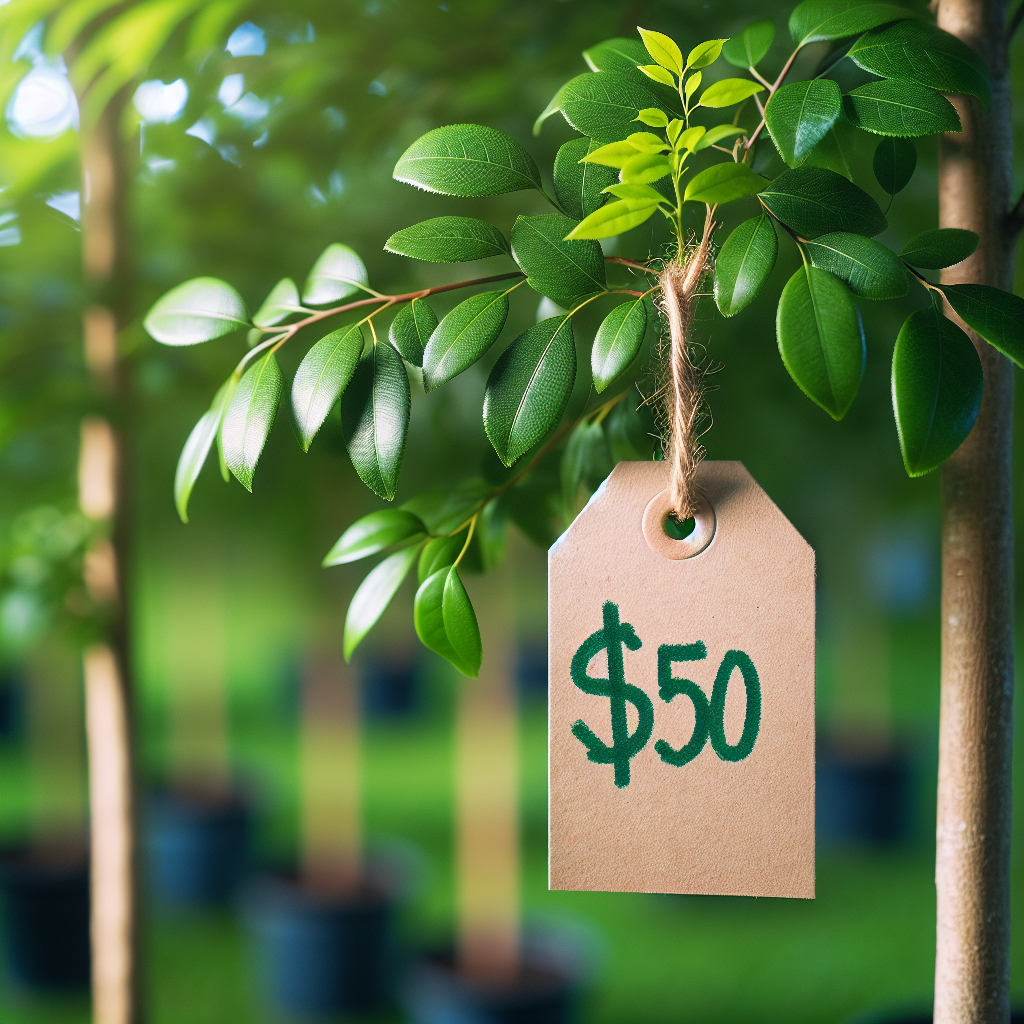
How much does a tree cost
Understanding the Cost of Trees: A Comprehensive Guide
When it comes to enhancing your property’s landscape, trees are a significant investment. They not only beautify your space but also provide numerous ecological benefits. However, many people wonder how much does a tree cost? The answer is not straightforward and can vary significantly based on various factors including the type, size, and location of the tree. This article will explore these factors in-depth to help you understand the potential costs associated with purchasing a tree.
The Factors Influencing Tree Cost
Let’s break down the key factors that influence the cost of a tree to help you make a more informed decision.
- Type of Tree: Different species of trees come with different price tags. Some trees, particularly rare or exotic species, will generally cost more than common local varieties.
- Size of the Tree: The larger the tree, the higher the cost. This is important to consider, as larger trees provide more immediate shade and aesthetic value.
- Location: Prices can greatly vary depending on your geographic area. Trees in urban settings may be more expensive due to higher demand and logistical challenges.
- Source: Whether you buy from a nursery, a landscaping company, or a big-box store plays a significant role in the price.
- Condition: A healthy, well-maintained tree will usually cost more than one that is not in good condition or has been poorly cared for.
Cost Breakdown by Tree Type
Now let’s examine some example costs for various types of trees to give you a better idea of what you might expect. The prices below are average estimates and can vary by region and supplier.
| Tree Type | Average Cost | Notes |
|---|---|---|
| Maple | $250 - $800 | A popular choice for shade and its beautiful fall colors. |
| Oak | $300 - $1,000 | Long-lasting and sturdy, great for larger yards. |
| Pine | $100 - $500 | Different varieties can vary greatly in price. |
| Fruit Trees (Apple, Pear) | $150 - $400 | Bear fruit and add beauty to gardens. |
| Cypress | $200 - $800 | Excellent for wet areas; adds unique structure to landscapes. |
Purchasing Options: Where to Buy Trees
Once you’ve decided on the type of tree you’d like to purchase, the next step is choosing where to buy it. Here are some common options:
- Nurseries: Local nurseries often provide a wide variety of trees, and the staff can offer valuable advice on the best species for your area.
- Landscaping Companies: These businesses can not only sell you the tree but also help with planting and maintenance.
- Garden Centers: Similar to nurseries, garden centers offer a range of landscaping plants, including trees.
- Big-Box Stores: Stores like Home Depot or Lowe’s offer competitive pricing on a range of trees, but they may have limited expertise compared to specialized nurseries.
- Online Retailers: Many reputable nurseries offer trees online. Ordering online can provide you with a wider variety but be sure to check shipping conditions.
Additional Costs of Tree Ownership
While understanding how much does a tree cost is crucial for initial purchasing, ongoing maintenance and care are just as important to consider. Let’s look at the potential additional costs associated with tree ownership.
Planting Costs
If you decide to hire a professional to plant your tree, expect to pay anywhere from $50 to $300, depending on the complexity of the planting and the size of the tree.
Watering and Fertilization
- Watering: Newly planted trees generally need regular watering, especially during dry spells. A garden hose or irrigation system may increase your water bill.
- Fertilization: Adding fertilizer to encourage growth can cost between $20 and $100 annually.
Pruning and Maintenance
Regular pruning is vital to maintain the health and appearance of your tree. Hiring a professional arborist for tree pruning may cost between $150 to $400.
Tree Removal
Ultimately, if you need to have a tree removed, this can be quite costly, ranging from $200 to $2,000 or more depending on the tree’s size and location.
Choosing the Right Tree for Your Landscape
While cost is an important factor, it’s equally crucial to choose the right tree for your property. Consider the following criteria:
- Climate: Ensure the tree is suitable for your local climate and environmental conditions.
- Space: Consider the size the tree will reach at maturity. Make sure you have adequate space for its canopy and root growth.
- Function: Determine what you want from the tree. Is it shade, aesthetics, or fruit production?
- Maintenance Level: Some trees require more care than others. Choose one that fits your lifestyle and maintenance capability.
Consulting Professionals
Before making your final decision, it may be beneficial to consult with a landscape architect or a tree expert. These professionals can provide you with insights into the best trees for your specific needs and conditions, and they can also give you an idea of long-term costs associated with that choice.
Conclusion: Making an Informed Decision
Investing in trees is an important decision that can enhance your property’s value and ecological footprint. Understanding how much does a tree cost can help you budget for this investment and ensure that you are choosing the best tree for your situation. Take your time to research, consult with professionals, and carefully consider the ongoing costs of tree ownership. With the right choices, your tree can provide beauty and ecological benefits for decades to come.
"The best time to plant a tree was twenty years ago. The second best time is now." - Chinese Proverb
Whether you are a first-time homeowner looking for curb appeal or a seasoned gardener enhancing your landscape, trees can be a beautiful and valuable addition to your property. Happy planting!
By Guest, Published on September 21st, 2024